“What is most fascinating about Project Room is that it shows “the moment”. It accompanies the audience in witnessing the birth of certain phenomena, which we are still not able to classify and, therefore, they lay outside of our comfort zone” – says Małgorzata Ludwisiak, the director of the Ujazdowski Castle Centre for Contemporary Art in conversation with Contemporary Lynx.

Małgorzata Ludwisiak, the director of the Ujazdowski Castle Centre for Contemporary Art
Dobromila Błaszczyk: In 2018 (from April until the end of December) we will have the chance to visit exhibitions by young artists organised within the Project Room. Could you please tell us what the aim of the Project Room is and what it is actually about? How do you think the audience approaches this concept? Should they perceive it as a series of events, as a few separate exhibitions, a visual artists’ competition or a presentation of works that the jury has found particularly interesting?
Małgorzata Ludwisiak: The Project Room was created in order to support young Polish artists. We are open to those who have already started their careers in the contemporary art world, as well as those who are still looking for a suitable opportunity to march in and make their statement. We want to highlight the momentum that young artists represented in these groups are rapidly gaining. They still struggle to be seen and recognised by art institutions in Poland and abroad, but are on the threshold and “knocking at the door” so to speak. Here is when we come in and assist them, so that they can step over this invisible threshold. Personally, I think that it is one of our key responsibilities as a public art institution. We took on this mission very seriously and decided to give young artists something beyond the exhibition space. We offer them an opportunity to work with professional curators and producers, to promote their art. Two years ago we started publishing information about our project participants and their works in a catalogue. Last year we launched an art competition with a jury who awards two prizes to the winning exhibitions. These prestigious prizes not only help our winners gain wider recognition and give them true satisfaction with their achievements, they also serve as financial support, which is crucial at the early stage of the journey as a professional artist. For the last six years, i.e. since 2012 when the initiative started, we presented 76 Project Room exhibitions by over 90 artists.
This is the seventh year that we have collected young artists’ portfolios and selected the best ones. Overall, Project Room is a perfect initiative taking into account the history of Ujazdowski Castle Centre for Contemporary Art. Since its early years, i.e. the 1990s, the Centre served as the venue for experimental projects which stretched beyond the borders of traditionally understood art. The Centre has always been open for young, completely unknown artists and has given them a space where they could present their works. Some of those artists became real stars of the art world after several years. To give you an example, Katarzyna Kozyra presented her famous diploma project entitled “Animal pyramid” during the “ Ideas beyond ideology. New generation in Polish art” exhibition, which was organised in Ujazdowski Castle in 1993. That year she only managed to graduate from the Academy of Fine Arts. Despite her relative lack of artistic experience, her diploma project was widely discussed by art critics and the media. This is just one story and there are dozens of them, really.
When it comes to your last question, I would say that all the options you listed comply with our intentions. Project Room is a series of presentations and, at the same time, a review of phenomena which are probably soon going to gain significance in contemporary art despite remaining relatively unrecognised at the moment. Recently this event also became a contest for young, aspiring artists.
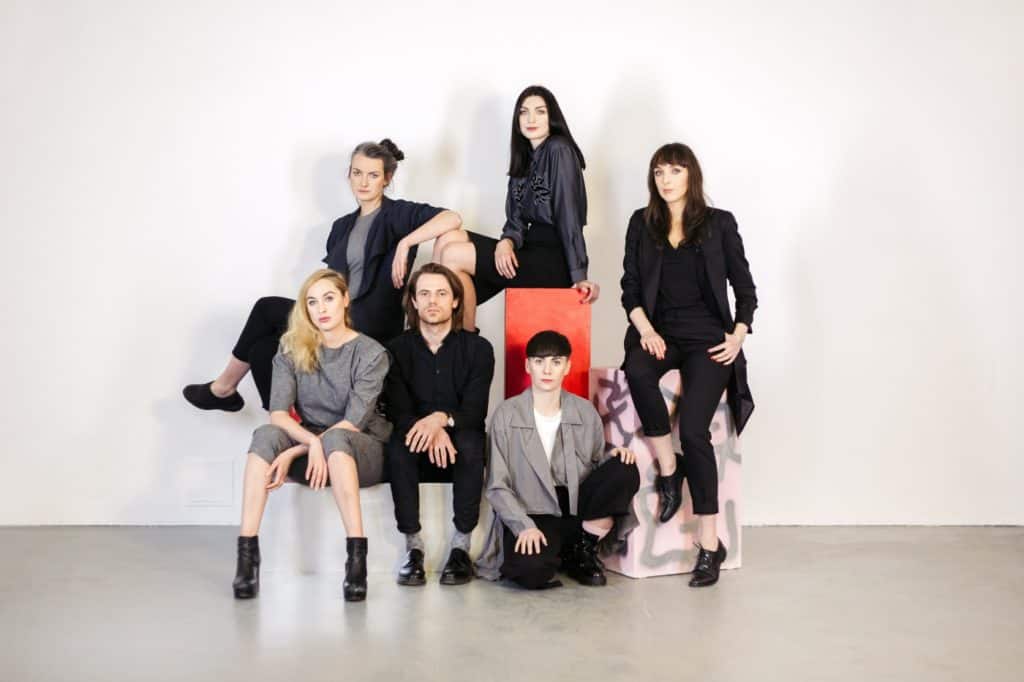
Participating Artists, The Project Room 2018, Ujazdowski Castle Centre for Contemporary Art, photo Karolina Zajączkowska

Grzegorz Stefański, spill, Ujazdowski Castle Centre for Contemporary Art. Photo: Bartosz Górka.
DB: I am really curious as to what were the criteria on which you based your selection. What did the 30 experts take into consideration when selecting artists at the first stage of the competition? What were the key criteria when selecting the final group of six artists? What are you really looking for when you browse through the submissions? Do you want to find an interesting project or do you rather assess the artist as a whole?
ML: For the last few years we used to select ten artists per project edition. This year, however, we chose just six. Briefly, I would describe our efforts as follows: the artistic presence and overall concept are what experts from all-around Poland who participate in the selection of artists are taking into consideration at first. Three years ago we decided to invite new members to the “selection committee”. Now we have experts from about a dozen Polish cities, which allow us to take a closer and more unbiased look at artists from more remote parts of our country. We already gave some artists from outside of Warsaw the opportunity to organise their first individual presentations and exhibitions in the capital city and from that moment on, their careers moved rapidly. Members of the selection committee submit from 200 to 300 portfolios of artists they recommend as project participants. Kamil Kuskowski, who coordinates the project at this stage, makes an initial selection of 50-60 portfolios, which he transfers to the next stage. Afterwards, Kamil and the group of Ujazdowski Castle curators choose a few artists who they invite to present their exhibitions featuring newly created works as part of the Project Room initiative. To sum up, our underlying criterion is the innovative approach of an artist. We look at the questions that he/she asks and the conclusions that he/she draws regarding contemporary reality, as well as the at the structure of his/her narration and the means he/she uses for presentation.

Mateusz Kula, “Excavations” installation view, Ujazdowski Castle Centre for Contemporary Art. Photo: Bartosz Górka
DB: And, technically, how does the selection process go? Do artists have to send their portfolios to the experts who collaborate with you or are they chosen by the experts themselves, who pick on project participants based on subjective impressions and experience?
ML: The people who work in the selection committee are all prominent artists and professors at artistic higher education institutions, or directors of city art galleries, and experienced curators who are active locally. They base their choices on their own observations. They recommend to us young students of art schools or artists who have already made some promising first steps in the artistic world, but who work in other cities, such as Wrocław or Tarnów. Usually, our experts are familiar with the portfolios of artists they decide to recommend as project participants and follow their artistic activities. We, as project organisers, completely rely on those recommendations.
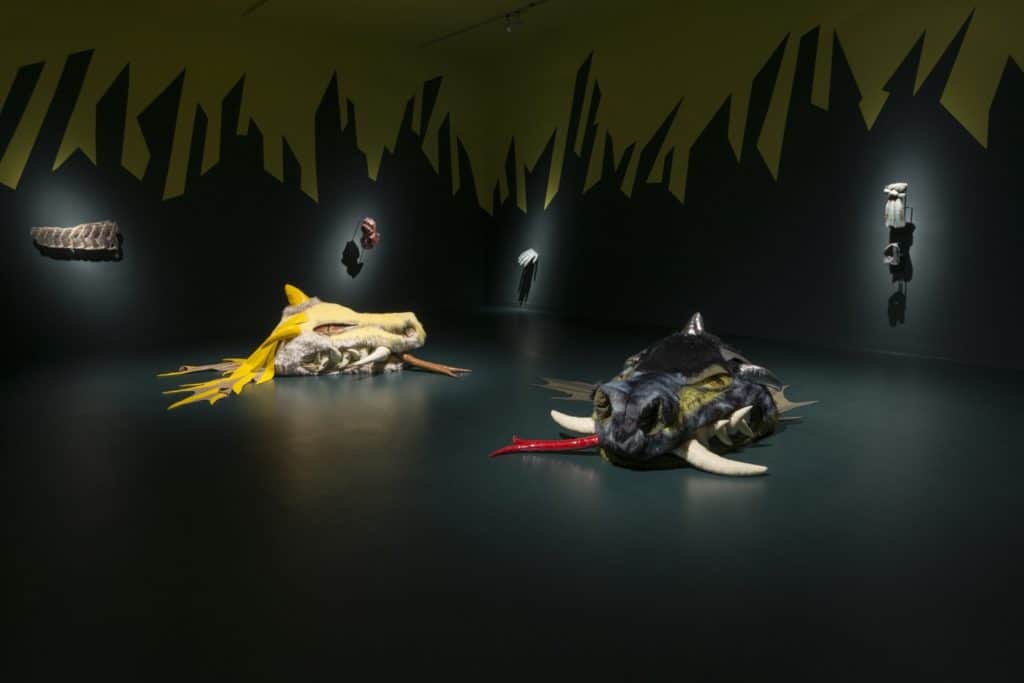
Zuzanna Czebatul, “TRIP CITY” installation view, Ujazdowski Castle Centre for Contemporary Art. Photo: Bartosz Górka
DB: The young artists whose works will be exhibited this year as part of the project represent very different fields of art. Do you always strive to present such diversity when you select the project participants?
ML: I think that diversity is an outcome of our efforts, but is definitely not a determinant for our decisions. This year we put emphasis on the uniqueness of ideas and on convincing exhibition proposals. As it turned out, the exhibitions that our six participants are going to present combine into a series of diverse presentations. This series perfectly reflects the broad spectrum of artistic practices that we witness nowadays. In general, our Centre for Contemporary Art always develops an artistic program which is diversified. Therefore, we can say that diversity is a crucial constituent part of the Castle’s philosophy for as long as it exists. It is great that Project Room complements this diversity-based approach.
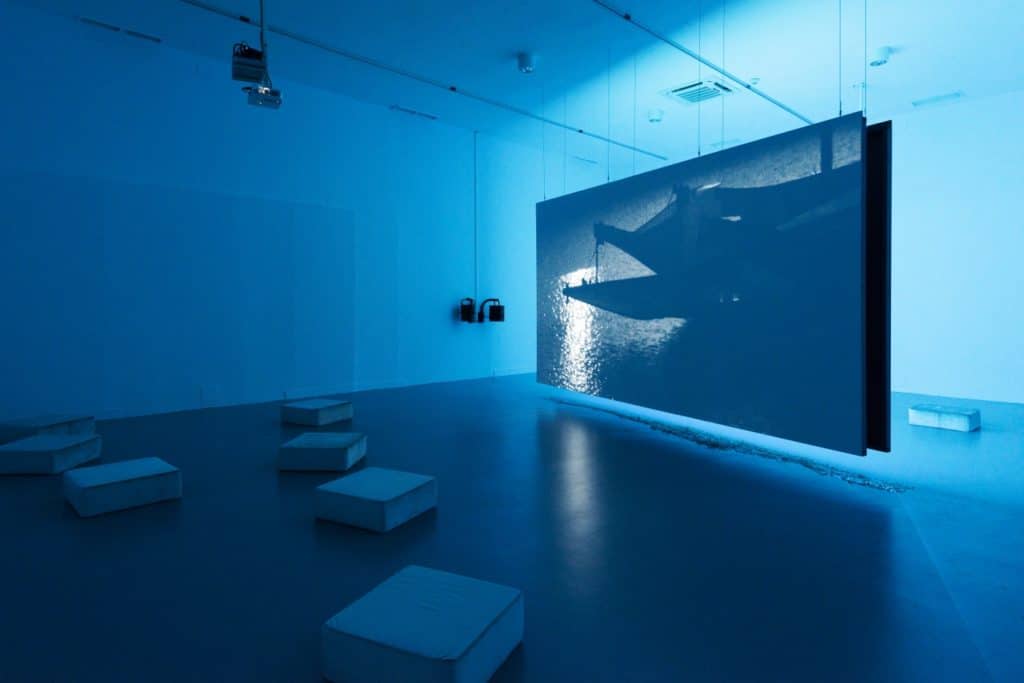
Marta Hryniuk, ”Cold Body Shining” installation view, Ujazdowski Castle Centre for Contemporary Art. Photo: Bartosz Górka
DB: There have been a few organisational changes to Project Room since its launch. I am sure that as the project progressed, you felt the need to transform its form and reconsider the criteria based on which you selected the participating artists. What was the first stimulus that made you create the project? Was there anything specific that changed your approach and convinced you to make certain organisational adjustments?
ML: Indeed, the project’s format was reshaped a few times. It was actually a good thing, because the whole initiative became more flexible and developed so that we were able to answer the evolving needs of young artists and our audience. Project Room was launched in 2012 by Fabio Cavallucci, the former director of the Castle, who managed to convince Bank Pekao to become our patron. Our initial goal was to make Ujazdowski Castle a unique venue where young artists could present themselves and where new phenomena in art could be experienced by our audience. Our plans were exceptionally ambitious and we worked really dynamically. We managed to hold as many as 17 presentations a year! Some unknown artists who collaborated with us at that time are now artistic celebrities. Kuba Wojnarowski, Przemek Matecki and Aleksandra Waliszewska are just some of the names. In 2015 we decided to slow the pace down a bit. We invited half the number of artists but offered them something more than we used to do before. They were able to prepare new works and were supported in their efforts by our own curators. The results were outstanding. For example, the presentation by Anna Panek curated by Stach Szabłowski featured a marvellous site-specific installation combining architecture and painting. Stach also invited a group of artists called Sandra Art Gallery who presented a motorcycle riding performance during which they produced an exhaust fumes sculpture. Diana Lelonek collaborated with Marcin Krasny in transporting plants and microorganisms to the gallery. These living organisms started to gradually “digest” the exhibited objects and the castle architecture. Such works could only have been created on someone’s specific request. That project edition proved a success, which is why we decided to stick to our new strategy. We requested the participating artists to create new works, specifically for a given edition of Project Room. This gives our participants a unique chance to work on a new piece. Very often this is the first occasion when they prepare a big project for a public institution. Ujazdowski Castle not only provides financial means, but also offers the support of a curator and a producer, as well as opportunities to promote the works and get good press thanks to the informative publication in our catalogue. Since 2016 we have been collaborating with about 30 experts who select the artists. This was also the first year that we invited curators representing the young generation to collaborate with our project participants. These curators often come from the same cities as the artists and are familiar with their activities and achievements. Making the generation of young curators active and vital participants of Project Room is an added value of our project. Last year we decided to make Project Room even more exciting. The all-year series of presentations becomes a competition at the same time. A jury nominates two artists as the first and second place winners, who receive financial prizes of 20,000 Polish zloty and 10,000 Polish zloty, respectively. Each year there is at least one member of the jury who comes from abroad. Artists who receive these awards are not only better recognised in the artistic world and have a great opportunity to promote themselves, but they also get those financial means which serve as a true support for them to create their next projects.
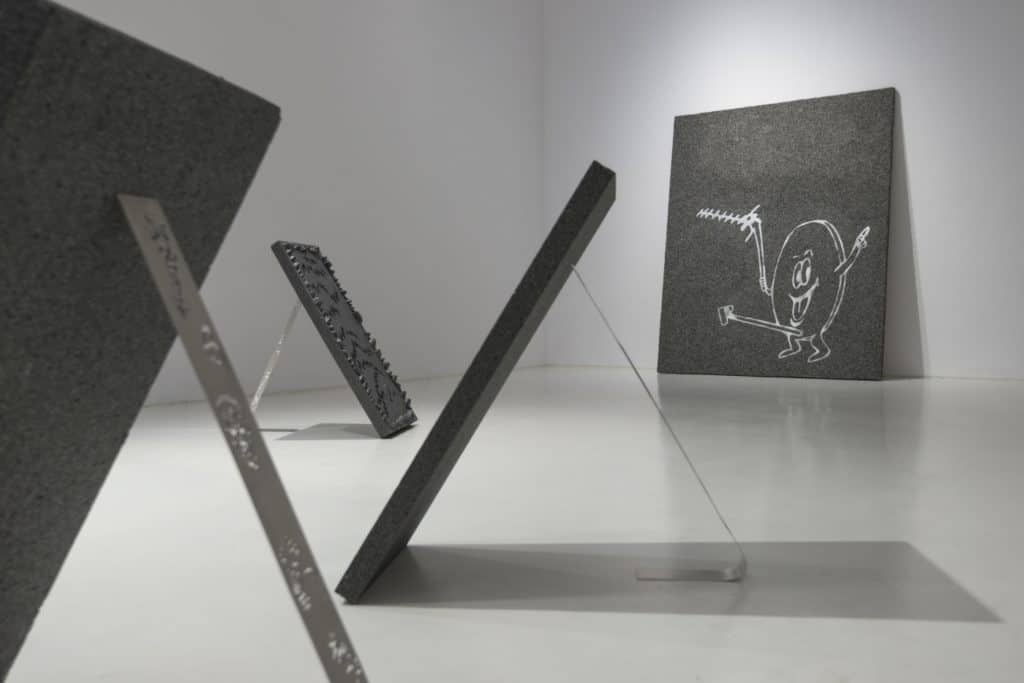
Stachu Szumski, ”Prognosis for the era of postthermomodernization” installation view, Ujazdowski Castle Centre for Contemporary Art. Photo: Bartosz Górka
DB: This year you will be presenting exhibitions by artists who are mostly at the very beginning of their careers. They are still developing their own means of expression and are usually not experienced in collaborating with museums and galleries. Your event and competition seems a perfect opportunity to learn those skills and verify both the quality of narration, as well as the content the artists present. It also serves as a test to see whether these young people know how to work with a curator and an art institution. Tell us what the collaboration of your institution with such young artists looks like. How do you collaborate with young curators, who are also taking their first steps in the professional world of art?
ML: It has been going really well so far! Ujazdowski Castle has many years of experience in working with experimental means and subject matters, and producing site-specific works in collaboration with artists. I think that it is important for us to continue following this path. We support both the artists and the curators invited to participate in Project Room. They receive all the equipment and facilities they need. All problematic issues are discussed with Kamil Kuskowski (Project Room coordinator), Jarosław Lubiak (program manager), and Michał Grzegorzek, who recently joined the team of project curators. The coordinators and technical team working at the Castle do an excellent job by helping artists create new, demanding presentations. On many occasions I have heard artists admitting that they really learned a lot from all these people. On the other hand, there are also things which we learn from the artists we invite for the project. We learn the language of modern art, the questions which artists ask nowadays and we get to know what crucial problems they address. In my opinion, the role of our institution is to accompany artists on their way and assist them in their quest.
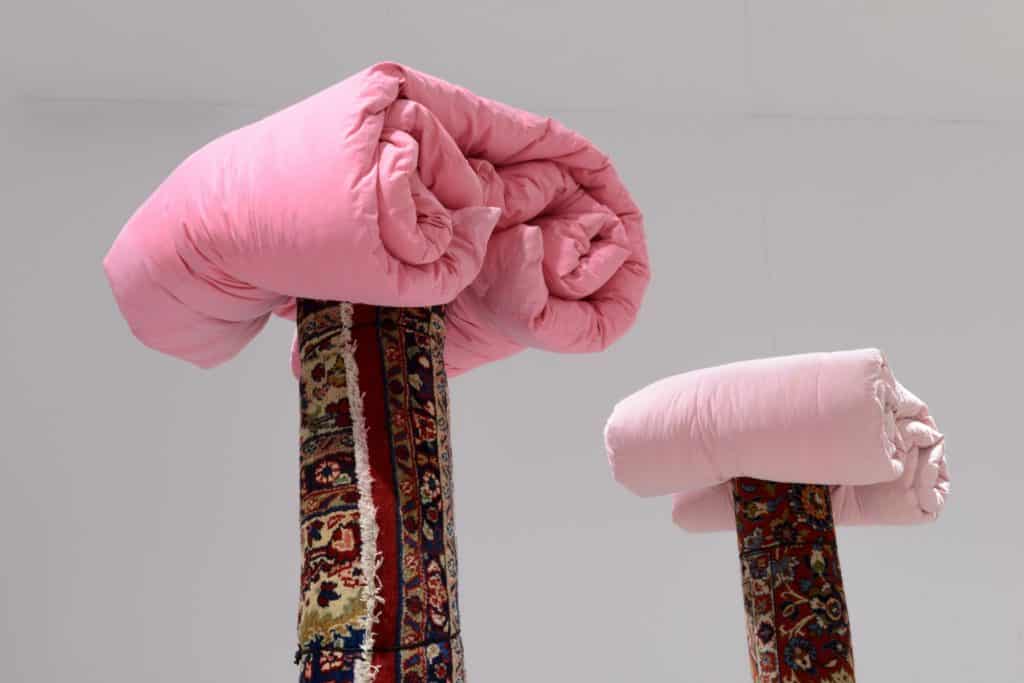
Brothers, installation view of Not too shabby, Ujazdowski Castle Centre for Contemporary Art. Photo: Bartosz Górka.
DB: Based on the results of this year’s selection and on the previous year’s project edition, can you tell us what are the common elements of young artists’ endeavours? Is there any specific area that all artists seem to be exploring? Are there some common aspects in the work of all artists of the younger generation?
ML: We try to find answers to these questions and so far, we have noticed some general tendencies. The first noticeable thing is the fascination with everyday life, common objects and rituals which combine into what we call a daily routine. Another aspect of their activity is introducing nature and natural processes, plants and animals as the main actors and central figures in the projects. There are projects on the brink of performance and visual arts, whose nature is experimental. Other projects are about making clear conclusions on contemporary reality by referring to history or fiction. I think that all these phenomena, which at the moment remain vague and obscure, will be soon classified and described by art theoreticians. They need to be assessed by someone from outside, not personally involved in the activities, just as is the case with all new phenomena in art. What is most fascinating about Project Room is that it shows “the moment”. It accompanies the audience in witnessing the birth of certain phenomena, which we are still not able to classify and, therefore, they lay outside of our comfort zone. To make sense of all of these, we have to pay close attention to what artists are saying. And that is, in my opinion, the most important aspect of our experience with Project Room.
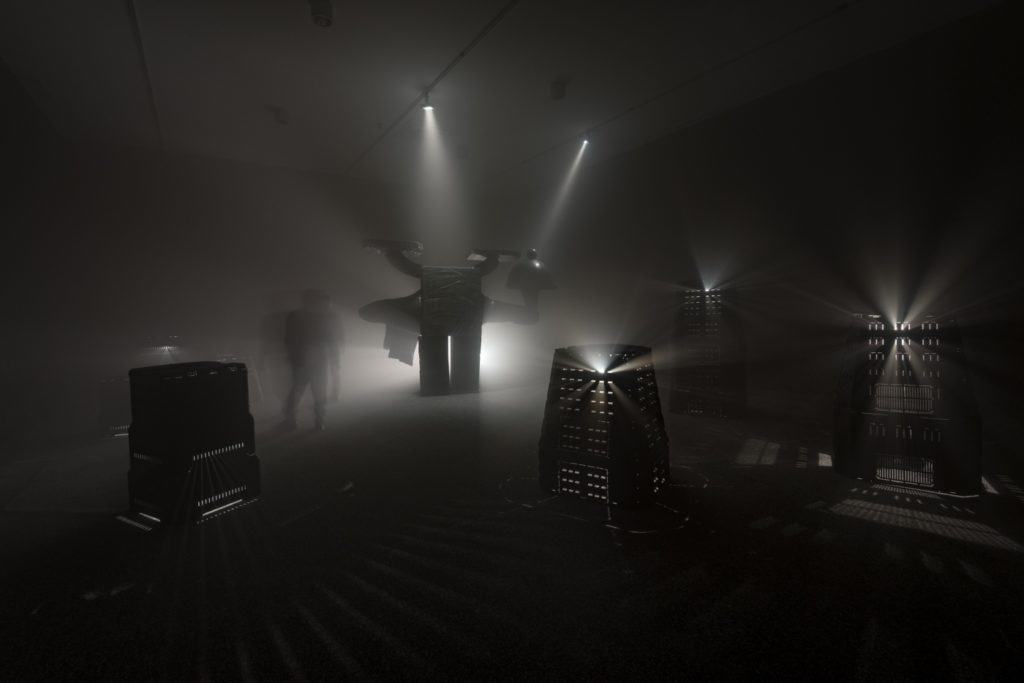
Cezary Poniatowski, “Compost” installation view, Ujazdowski Castle Centre for Contemporary Art. Photo: Bartosz Górka.
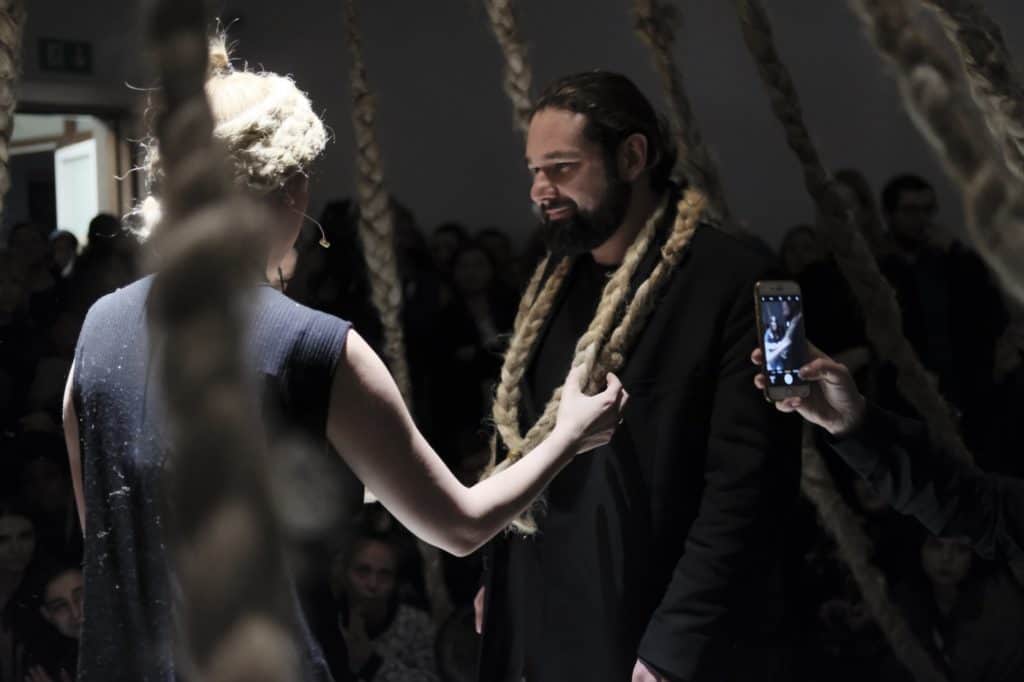
Mateusz Kula receives the 1st Prize in Bank Pekao Project Room 2017 competition.








